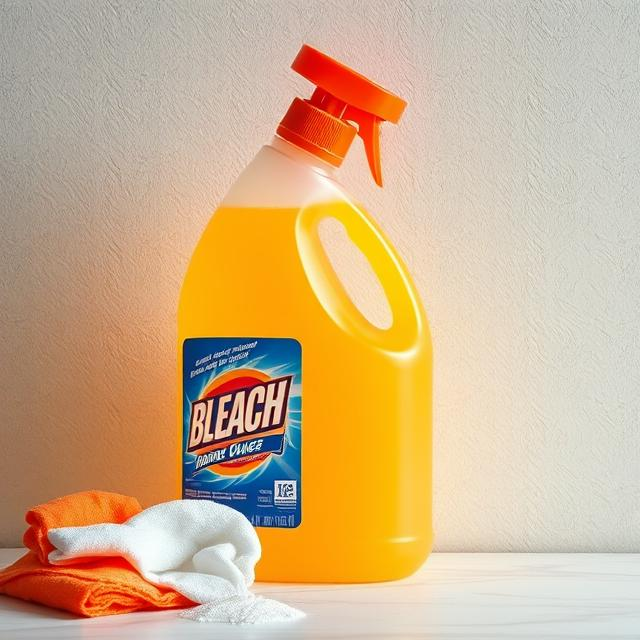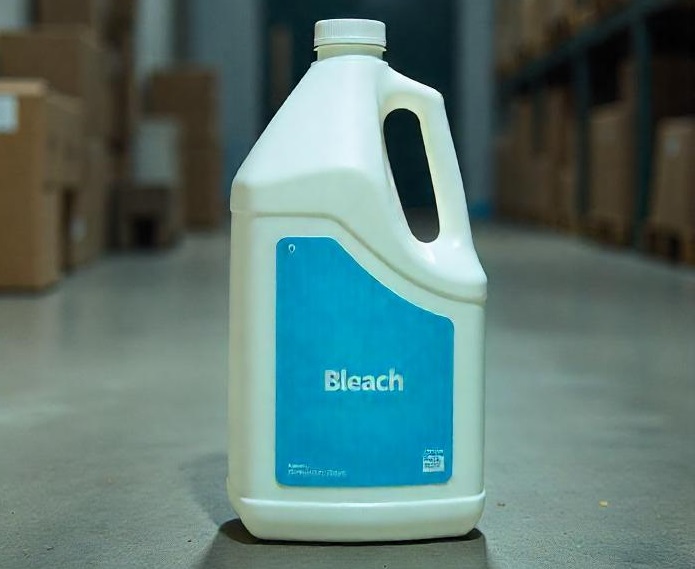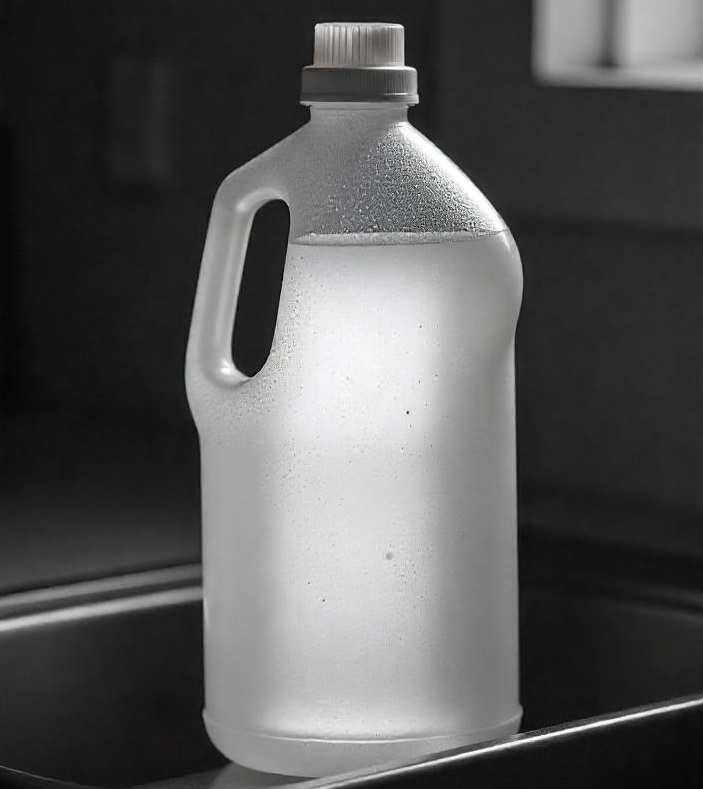Hey there! Let’s talk about something that’s probably sitting under your sink right now: the humble bleach bottle. I know, I know it’s not exactly the most glamorous topic. But stick with me here, because these everyday containers have a lot more going on than you might think. I’ll admit, I never gave them much thought until one day I was scrubbing my bathtub, and the bottle slipped out of my hand, splashing bleach everywhere.
That little mishap got me curious why are bleach bottles built the way they are? What’s their story? And how can I use them smarter? Turns out, there’s a whole world behind these plastic powerhouses, and I’m excited to share it with you. So, grab a comfy spot (maybe not near any bleach!), and let’s dive into everything you need to know about bleach bottles. By the end, you might just see them as more than a cleaning chore sidekick I sure do now!

What Is a Bleach Bottle?
Let’s start simple. A bleach bottle is a container designed to hold bleach usually that strong, chlorine-based liquid we use to whiten clothes, disinfect surfaces, or tackle stubborn stains. Most of the time, it’s made of sturdy plastic, with a screw cap or a nozzle for pouring, and it’s got a label screaming warnings about keeping it away from kids and pets (for good reason!). They come in all sizes small ones for quick jobs, big jugs for heavy-duty cleaning but they’re all built with one goal: to keep that potent bleach safe and ready to use.
I’ve got a bleach bottle in my laundry room right now a classic white jug with a red cap and every time I twist it open, I’m hit with that sharp, clean smell. It’s not fancy, but it’s reliable, and there’s something oddly satisfying about knowing it’s there when I need it. So, what makes these bottles special? Let’s dig in.
Also Read: The Ultimate Guide to Boston Round Bottles: Everything You Need to Know
Why Bleach Bottles Are Built the Way They Are
You’ve probably noticed that bleach bottles don’t look like your average water bottle or soda can. There’s a reason for that bleach is no ordinary liquid, and its container has to keep up. Here’s why they’re designed the way they are.
a. Material: Tough Plastic Only
Most bleach bottles are made from high-density polyethylene (HDPE) a thick, durable plastic that can handle bleach’s harsh chemistry. Bleach is a strong oxidizer, meaning it can break down weaker materials over time. Glass might seem like an option, but it’s heavy and breakable, and metal? Forget it—bleach would corrode it in no time. HDPE is the sweet spot: tough, lightweight, and resistant to bleach’s bite.
I learned this the hard way once when I tried storing diluted bleach in a flimsy plastic bottle from the dollar store. Within a week, it started leaking lesson learned! A proper bleach bottle is built to last, keeping that liquid locked up tight.
b. Opaque Design
Ever notice how bleach bottles are never see-through? That’s on purpose. Bleach breaks down when exposed to light UV rays can weaken its potency, turning it into a less effective mix of water and salt. So, manufacturers use opaque plastic (usually white or gray) to shield it. I’ve got a white bleach bottle under my sink, and it’s like a little fortress protecting its contents from the sun sneaking through the window.
c. Secure Caps and Nozzles
Spills are the enemy when it comes to bleach, and bleach bottles are designed to prevent them. The caps are tight sometimes annoyingly so, if your hands are wet and many come with childproof features. Some even have angled nozzles for controlled pouring, which I love when I’m trying to hit a specific spot without splashing my shirt. That first spill I mentioned? It wouldn’t have happened if I’d paid more attention to the nozzle user error, not the bottle’s fault!
d. Ergonomic Shape
Most bleach bottles have a handle or a grip-friendly shape. Why? Because bleach is heavy, and pouring it can get awkward fast. The jugs I use have a molded handle that makes it easy to tip without straining my wrist. It’s a small thing, but when you’re scrubbing down a whole kitchen, it’s a lifesaver.

A Quick History of Bleach Bottles
Okay, let’s take a little trip back in time. Bleach itself sodium hypochlorite, if we’re getting technical has been around since the late 18th century, when it was used to whiten textiles. But bleach bottles as we know them? They’re a more modern invention, tied to the rise of plastic in the mid-20th century. Before that, bleach came in glass bottles or metal cans imagine lugging those around! Once HDPE hit the scene in the 1950s, it was a game-changer. Suddenly, bleach could be packaged in lightweight, unbreakable containers that anyone could handle.
I love picturing those early days households switching from clunky glass to these sleek plastic jugs. It’s like the bleach bottle grew up alongside us, adapting to our busy lives. Today, it’s a cleaning staple, and I can’t imagine my laundry routine without it.
Common Uses for Bleach Bottles
So, where do bleach bottles show up in real life? Spoiler: they’re not just for laundry. Here’s how they and the bleach inside fit into our world.
a. Laundry Whitening
This is the classic. A bleach bottle in the laundry room is like a superhero for white socks and stained towels. I’ve saved so many shirts from tomato sauce disasters with a splash from my trusty jug. It’s simple: pour a little into the wash (check the label for how much!), and watch those whites come back to life.
b. Surface Disinfecting
Bleach is a germ-killing beast, and bleach bottles make it easy to use around the house. Mix a bit with water (usually 1:10 ratio), pour it into a spray bottle or straight from the jug and wipe down counters, sinks, or doorknobs. During flu season, I keep a diluted mix handy in a repurposed bleach bottle, and it’s a quick way to feel like I’m winning the germ war.
c. Stain Removal
Got a stubborn spot on your patio or a mildew mark in the bathroom? A bleach bottle is your go-to. I once tackled a moldy shower grout with a small pour from my jug, and it was like magic grossness gone in minutes. Just be careful it’s strong stuff, so ventilate and wear gloves!
d. Repurposing the Bottle
Here’s a fun twist: once the bleach is gone, the bleach bottle itself can get a second life. They’re tough enough to reuse for water, homemade cleaners, or even garden projects. I’ve cut one into a scoop for potting soil works like a charm. Just rinse it really well first bleach residue is no joke.

Sizes of Bleach Bottles
Not all bleach bottles are the same size, and that’s a good thing it means there’s one for every job. Here’s the rundown:
- Small (16-32 oz): Perfect for quick tasks or small households. I keep a 32 oz bleach bottle for spot cleaning it’s easy to store and lasts a while.
- Standard (64 oz): The classic jug you see everywhere. Great for regular laundry or big disinfecting jobs. It’s my laundry room MVP.
- Large (128 oz+): For heavy users think big families or cleaning pros. I’ve got a friend who swears by these for her daycare business.
The size you pick depends on how much bleach you go through. For me, the 64 oz bleach bottle hits the sweet spot enough to last, not so much it takes over my cabinet.
Safety First: Handling Bleach Bottles
Bleach is powerful, which is why bleach bottles come with a ton of safety features and why we need to use them right. Here’s what I’ve learned:
- Keep It Sealed: That cap’s there for a reason. I once left a bleach bottle half-open by mistake, and the fumes hit me like a wall. Lesson learned tighten it up!
- Store Smart: Cool, dark, out of reach of kids and pets. My bleach bottle lives on a high shelf in the garage safe and sound.
- Ventilate: Use it in a well-aired spot. I cracked a window the first time I cleaned with bleach, and it made a huge difference.
- Don’t Mix: Bleach plus ammonia or vinegar? Bad news toxic gases. Stick to water for diluting, and check the label.
I’ve had my share of bleach blunders, but following these rules keeps it drama-free.
Environmental Impact: Are Bleach Bottles Green?
Let’s get real bleach bottles aren’t perfect for the planet, but they’re not the worst either. Here’s the scoop:
- Recycling: HDPE is recyclable yay! Most curbside programs take bleach bottles, so rinse and toss them in the bin. I’ve been doing this for years, and it feels good to give them a second shot.
- Reusability: Empty ones can become water jugs or craft supplies. I’ve got a repurposed bleach bottle holding my garden twine works great.
- The Catch: Making plastic takes energy, and bleach itself isn’t super eco-friendly. It’s a trade-off clean home vs. green vibes. I try to balance it by reusing and recycling where I can.
How to Choose the Right Bleach Bottle
Picking a bleach bottle isn’t rocket science, but here’s how to get it right:
- Size: Small for occasional use, big for bulk. Match it to your habits.
- Brand: Stick to trusted names Clorox, generic store brands they’re all solid if the bottle’s HDPE.
- Features: Nozzle for precision, handle for grip think about what makes pouring easy for you.
- Price: Bigger bottles are usually cheaper per ounce. I grab the 64 oz bleach bottle when it’s on sale—value and convenience in one.

Caring for Your Bleach Bottle
Keep your bleach bottle in top shape with these tips:
- Rinse After Use: If you’re reusing it, wash it thoroughly no bleach traces left behind.
- Check for Cracks: A damaged bleach bottle can leak. I inspect mine every so often better safe than sorry.
- Store Upright: Prevents spills and keeps the cap from getting gunked up.
My bleach bottle has lasted ages with a little TLC it’s tougher than it looks!
Why I Love Bleach Bottles (And You Might Too)
Here’s the thing: bleach bottles are unsung heroes. They’re not flashy, but they’re there when you need them tackling stains, killing germs, even doubling as DIY tools. I’ve come to appreciate their no-nonsense design and the way they make tough jobs easier. That spill I mentioned? It taught me to respect the bottle, not just the bleach inside.
For me, a bleach bottle is a little piece of reliability in a messy world. Whether you’re a cleaning pro or just someone keeping the house together, they’ve got your back. So, next time you grab one, give it a nod it’s earned it. Got a bleach bottle story of your own? I’d love to hear it drop it below!
